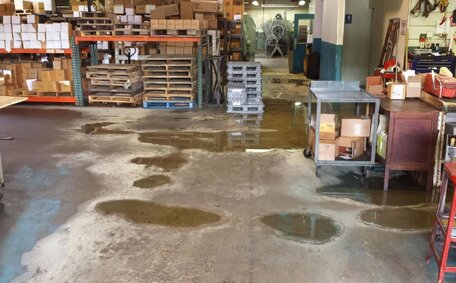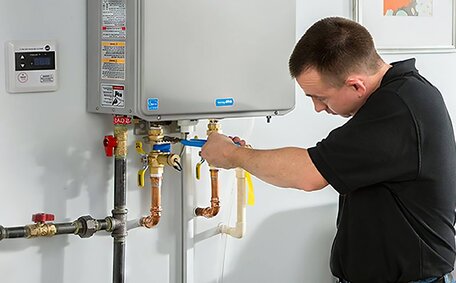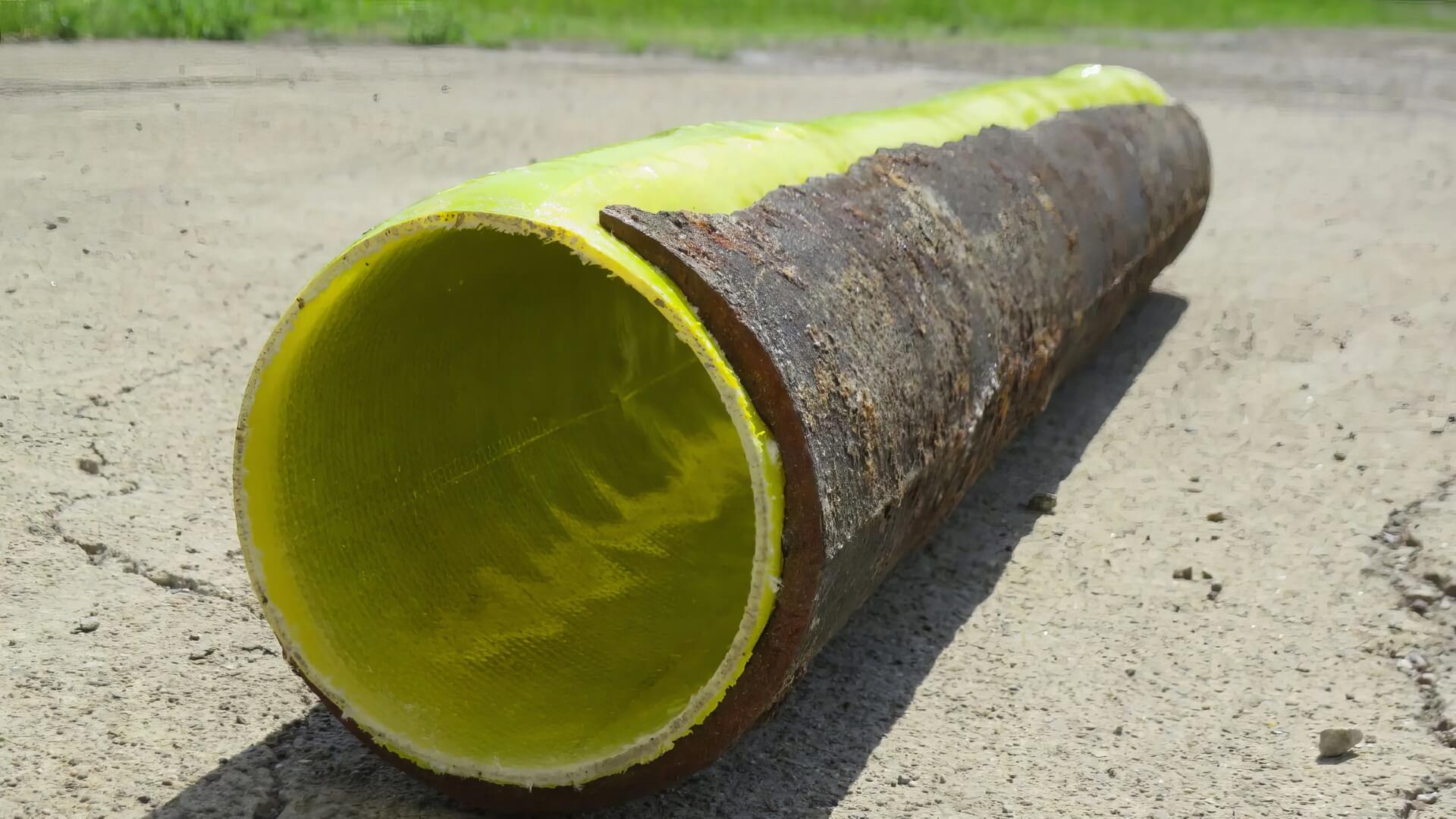
How To Fix Water Heater Issues
Can’t get hot water from your water heater? Try troubleshooting by checking the power supply, thermostat, heating elements and more. Call a pro plumber for repairs.
Read MorePipe relining revitalises old, damaged pipes without trench-digging, saving you the hassle of extensive excavation and full plumbing system replacement. It involves coating the inside of a damaged pipe on your property with flexible epoxy resin, creating a flawless, watertight barrier.
The resin lines the existing pipe, reinforcing and effectively creating a new pipe within the old infrastructure.
Pipe relining is ideal for bathroom renovations or relocating plumbing fixtures, streamlining the process with minimal structural modification. Specialists cut small access points into the pipes to clean and apply the resin lining, streamlining the relining process.
Compared to traditional methods, the pipe relining method is far less invasive, quicker to carry out, and mandates minimal excavation work.
This method is also more cost-effective than replacing and excavating floors or driveways to access underground pipes. Relining can restore your plumbing’s structural integrity, water flow, and pressure without need for exorbitant expenses.
Understanding the benefits of pipe relining provides key support when you’re renovating your home.
It is a minimally invasive process.
Instead of excavating your yard, we utilise small entry points to access underground pipes. You needn’t demolish walls or floors to reach your plumbing system.
The pipe relining process, culminating in a cured epoxy resin lining, also ensures that pipes can provide a glass-smooth surface that heightens water flow and pressure. By eliminating corrosion and buildup inside old pipes, relining can increase your pipes’ flow capacity by up to 150%. Improved flow ensures relocated sinks, showers, and toilets integrate seamlessly with your bathroom’s water system, functioning efficiently.
Professional pipe relining teams can restore your new plumbing network within a single day. The cured lining sets within hours, allowing for quick water supply reconnection to your pipes. without
Choosing pipe relining over full system replacement can reduce costs by an impressive 50-70%, a significant saving when remodelling your bathroom. The cost efficiency can save considerable money, making all the difference when remodelling on a budget.
In summary, non-invasive pipe relining facilitates fast, affordable bathroom and kitchen upgrades in Baulkham Hills homes without compromising flow capacity or structural stability.
While pipe relining brings a multitude of benefits, it’s important to measure your pipe’s condition against certain limitations before determining its suitability for your plumbing fixture relocation project.
Relining cannot repair pipes that are severely degraded and at risk of collapse – in such cases, complete replacement is essential. Expert plumbers assess your pipes to confirm their suitability for relining.
The resin lining adheres steadfastly to the original pipe walls, which could thwart future leaks and erosion. Therefore, Relining cannot increase the pipe’s diameter to allow for higher water flow rates under your fixture repositioning. Upfront planning for demand is key.
However, relining cannot rectify root intrusion if tree roots have compromised your sewer pipes. Tree roots must be removed before applying the protective resin barrier.
While it’s less costly than full replacement, relining could still cost more than anticipated without a proper assessment. For ageing piping networks with frequent blockages, replacement might better suit your long-term needs and budget.
In summary, pipe relining has limitations regarding repairing collapsing pipes, expanding flow capacity and eliminating root blockages. Proper site assessments and upfront costs should also be factored in when considering this method.
Repositioning plumbing fixtures with pipe relining requires careful planning to optimise space and convenience. Follow these key steps for DIY success:
Inspect your existing setup to determine which fixtures to reposition. Trace pipes back to the hot water system, metre and sewer/septic connection points. Create a detailed diagram of the pipe routes.
Consult a licenced pro to inspect your sewer line and plumbing network. They will determine if your pipes are structurally sound for pipe lining and provide a project cost estimate.
Ensure you clear adequate space where the relocated fixtures will be installed, simplifying the pipe repositioning process. For sink, tub or basin moves inside your property, have grinders available to modify benchtops. Consider temporary drainage solutions if your toilet requires re-siting.
At the planned fixture site, cut small openings in the wall/floor to access pipes. Use a CCTV drain camera to assess the condition of your pipes and jet clean the internal walls, removing antiquated buildup.
Our expert plumbers thoroughly coat your pipes’ interiors with a new lining of flexible, watertight epoxy resin. The thickness of the resin layer may vary based on pipe dimensions.
Once resin cures solid, reconnect water supply at new fixture sites. Modify surrounding cabinetry with saws if needed, then install new fixtures in their updated positions.
Inject protective filler into the small pipe access cavities, also known as access panels, and then seal the openings with cement.
Turn water supply back on. Carefully check new fixture locations for leaks at joints using a flashlight. Also check beneath basins/tubs for moisture.
With the right prep work and pro support, relocating plumbing elements via minimally invasive pipe relining is an achievable DIY project that saves on major demolition.
When you need to relocate plumbing in your Baulkham Hills home, considering pipe relining is important to identify which pipes are suitable candidates.
A comprehensive plumbing system inspection is conducted using CCTV cameras. We examine if the pipes might show signs of:
We’ll also review pipe materials. Relining works for many pipe types including copper, PVC, concrete, clay and galvanised iron. It bonds firmly to form a protective inner barrier.
Proper pipe condition assessments ensure suitability for the specific relining method involving epoxy resin application. We can then advise on the feasibility, costs, and reduced need to dig up your landscape when utilising pipe relining for your plumbing fixture relocation project in the Baulkham Hills area.
When relocating plumbing fixtures through pipe relining, homeowners may face several challenges that call for smart solutions.
In older Baulkham Hills homes, unknown blockages, tree root ingress or collapsed sections often impede projects. Our team’s CCTV pipe inspections identify such issues early. Pipe repairs are performed for salvageable pipes; if too degraded, we advise replacement or hydrojetting to clear blockages before relining.
Gaining entry to pipes in confined spaces, like under stairs or cluttered basements, akin to your closet spaces, can be tricky. Flexible cameras enable specialists to inspect and line difficult-to-reach pipes thoroughly.
As pipes shift over time, relocating fixtures connected to older galvanised iron or copper lines can become complex. Our expert plumbers carefully trace pipes to find safe new entry points.
Mid-project, temporarily losing kitchen or bathroom functionality can disrupt homes; however, our expert plumbers work diligently to minimise Such inconveniences. We provide solutions for renovating your home with schedule relining across single days to minimise downtime. Bypassing allows water supply elsewhere as works proceed.
Will epoxy linings suit older pipe materials? Our resins adhere firmly to existing surfaces including concrete, PVC, clay and cast iron to reinforce pipes.
By anticipating challenges, we streamline plumbing fixture relocations with minimal digging up your yard, mess and downtime. Contact our team to learn more about the best pipe relining practices for your next bathroom or kitchen revamp.
After completing plumbing fixture relocations using pipe relining, ongoing system maintenance is vital for long-term integrity.
We recommend scheduling annual drain inspections before beginning any relining projects. Our technicians will perform comprehensive inspections, attending to any signs of pipe damage such as new cracks or leaks, and ensure epoxy linings remain fully bonded.
Regularly monitor water flow rates to ensure your relocated fixtures and drains function correctly. Any drop in pressure could indicate buildup or obstacles within pipes. Let us investigate promptly before major blockages arise.
To maintain the health of your drains, avoid pouring fats or harsh chemicals down them, and use drain strainers to catch hair and food scraps. This prevents substances sticking to relined pipes over time, compromising drain performance.
Keep an eye out for moisture under basins or near toilets, which can indicate loosening joints after relocation. Have our technicians rectify drips immediately to prevent leaks worsening.
With attentive pipe care, regular maintenance checks, and prompt leak response, your relined plumbing system will provide enduring performance across years of service.
Even with careful planning, unexpected issues can arise during plumbing fixture relocation projects in Baulkham Hills homes. Recognising when to solicit the expertise of your plumber is key.
We recommend enlisting professional support if you encounter any of the following:
Our team at Baulkham Hills Plumbing has over 10 years of experience providing specialist pipe relining services across Sydney. Our fully licenced technicians can assess issues and advise on the most effective plumbing solutions.
We also offer free onsite quotes, have all necessary insurances, and can schedule urgent responses when you need prompt water supply or drainage restorations. Don’t hesitate to get in touch with our experienced team.
Can’t get hot water from your water heater? Try troubleshooting by checking the power supply, thermostat, heating elements and more. Call a pro plumber for repairs.
Read MoreCloudy or milky hot water coming from your taps is generally harmless and caused by trapped air bubbles in the water. Simply running the tap for a little while will usually clear up the water. If the cloudiness persists, it could be caused by sediment buildup or issues with your pipes.
Read MorePipe relining involves inserting a tube inside damaged pipes to repair cracks and leaks without digging. This trenchless method may allow pipes and plumbing fixtures to be relocated during bathroom renovations. Contact our expert plumbers to understand if pipe relining can reposition your pipes and fixtures.
Read MoreBaulkham Hills, 2153 NSW
We will call back as soon as possible.




